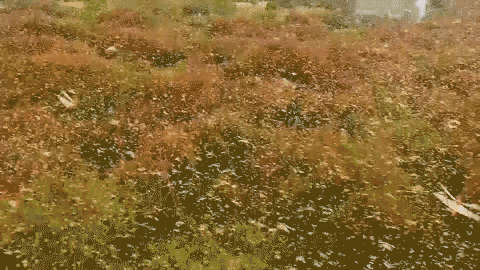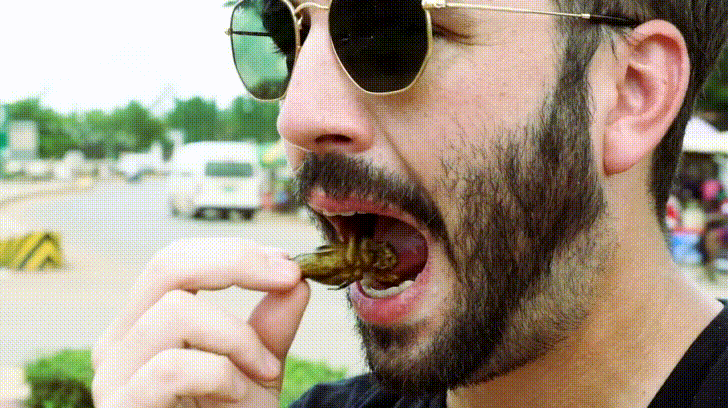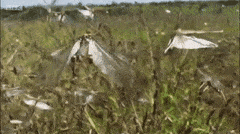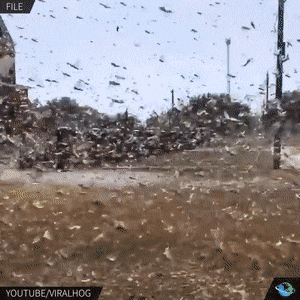
Plague of Locusts
by Kenneth Lyen



TWO PLAGUES
While we are battling the Covid-19 plague, there is another plague taking place concurrently, causing devastation in large parts of east Africa, the middle east, Pakistan and India. This is the plague of locusts which is destroying large areas of crops and causing starvation and death. But we are too preoccupied fighting Covid-19 to be concerned with this second plague. I will try to redress this imbalance.

THE PLAGUE OF EGYPT
Historically, probably the most famous plague is described in Exodus 10:3-6. Quote: “If you refuse to let them go, I will bring locusts into your country tomorrow. They will cover the face of the ground so that it cannot be seen. They will devour what little you have left after the hail, including every tree that is growing in your fields. They will fill your houses and those of all your officials and all the Egyptians - something neither your fathers nor your forefathers have ever seen from the day they settled in this land till now.”

However, Pharaoh was unmoved by the plague. Not to denigrate Pharaoh, but what if he thought like Donald Trump, perhaps he might have mused: “It’s going to disappear one day, it’s like a miracle, it will disappear.” And like Donald, Pharaoh’s reason for his objection is that if he let the foreign workers go, his economy will collapse, and this would be unthinkable! Apologies to Pharaoh!




Indeed throughout history, locusts have literally plagued the world causing famine and death to people and livestock.

LOCUSTS vs GRASSHOPPERS
There are two dictums describing locusts and grasshoppers. The first one is, “All locusts are grasshoppers, but not all grasshoppers are locusts.” It is like saying that all chihuahua are dogs, but not all dogs are chihuahuas.
The second aphorism states that “Locusts are grasshoppers with attitude.” As socially distant individuals, locusts behave quite respectably, but when crammed together in a large group they degenerate into mob behaviour. They swarm together in search of food, and destroy everything in their path. We see that in humans when attending a football match, or a Hong Kong political rally, where decent individuals can transform into unruly mobs.
Grasshoppers are usually green in colour and they move about mainly by hopping. They have shorter wings, and some grasshoppers can fly, but it is only for short distances. Generally grasshoppers have longer bodies than locusts. They are relatively stationary and only move when threatened or if they need to feed.

Locusts exist in two forms, the solitary and the gregarious. When solitary, they can be green, but they turn yellow-brown when they transform into the gregarious form. Compared to grasshoppers, they have longer and stronger wings which enable them to fly for longer distances. The body of locusts is shorter than grasshoppers. Solitary locusts look for food by themselves and are generally quite harmless. However, when there is heavy rainfall after a period of drought, there will be large numbers of eggs hatching causing a population explosion. The incubation period can be as short as 2 weeks. When they hatch, the small lymphs hop around looking for food. They shed their skin a few times, and when they hop around in larger groups they are referred to as “hopper bands”.

When there is overcrowding, the locusts touch each other, especially their legs. This stimulates the release of serotonin and the level rises. This in turn increases their appetite, they grow larger and change into a pink, and later, a yellow-brown color with blackish spots. Their behaviour also changes and they become very sociable and tend to do things like fly off in search of food together. They also breed more frequently and each female can lay 30 eggs, so their numbers can multiply astronomically. Each swarm can consist of several billions of locusts.



Locusts eat plants but they are not too fussy what plant food they eat. They have a ravenous appetite and can eat their body weight of food in one day. One swarm can raze large swaths of land and they can consume up to 200 tons of vegetable in a day. This crop carnage results in the starvation of both livestock and humans.


HOW TO CONTROL LOCUSTS?
1. INSECTICIDE SPRAY
The current way of controlling locusts by the spraying of insecticides. Synthetic pyrethroids are the insecticides of choice because they are least toxic to humans. They are sprayed directly onto the insects or onto plants or specially prepared bait.
2. BIOLOGICAL CONTROL MECHANISMS
A recent development is the use of Green Muscle fungus (Metarhizium anisopliae) which forms spores and is environmentally safe. Metarhizium biopesticide can kill between 70% to 90% of treated locusts within 2-3 weeks.
3. DUCKS
Also known as "fowl play", one duck can eat up to 200 locusts a day. This is an environmentally friendly method of locust control. Worth a try!


Question by Dr Lee Woon Kwang: Why can't humans eat locusts?
Answer: Yes, humans have eaten locusts in the past, and in some countries continue to do so. However, the current medical advice in areas attacked by swarms of locusts is: "Do not eat locusts because they may be sprayed by insecticides that can be harmful to you."


CONCLUSIONS
While we are focusing on Covid-19, let us not forget the other epidemic ravaging parts of the world and causing starvation and death in large numbers of people and livestock. There is a need to work together to fight both problems.
Written by Kenneth Lyen
10 May 2020
%20a.jpg)



REFERENCES
Locusts: Wikipedia: https://en.wikipedia.org/wiki/Locust
Difference between grasshoppers and locusts: https://www.worldatlas.com/articles/what-is-the-difference-between-grasshoppers-and-locusts.html
About locusts: https://www.agriculture.gov.au/pests-diseases-weeds/locusts/about/about_locusts
Control of locusts: https://www.weforum.org/agenda/2015/11/how-can-we-control-locust-swarms/
Life of locusts: https://whyfiles.org/shorties/276locust/
Ducks to eat locusts: https://www.cnet.com/news/china-may-send-100000-ducks-to-swallow-locust-plague/
